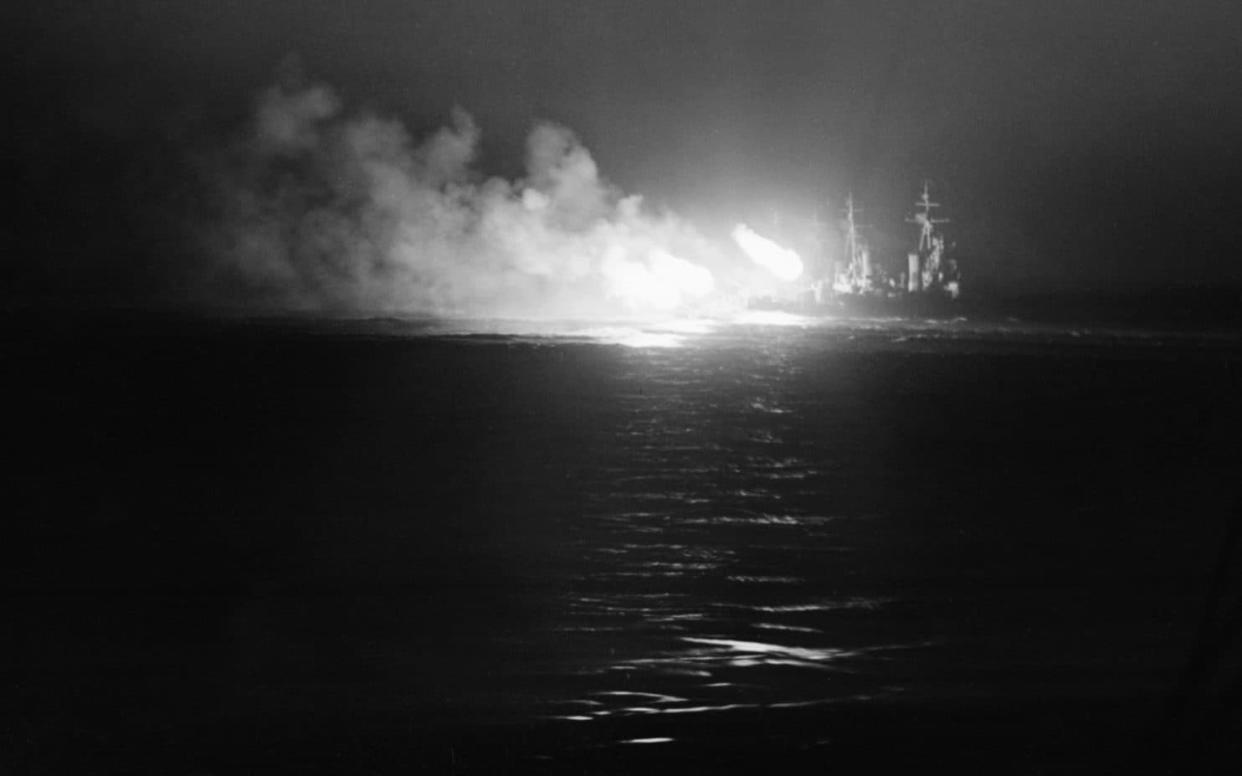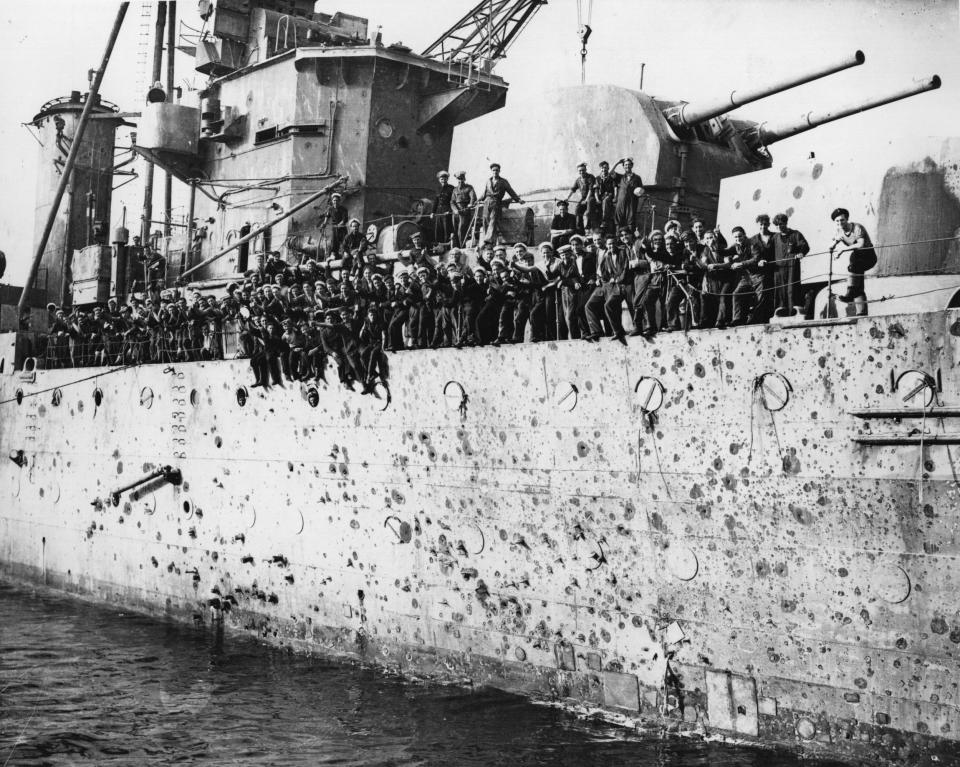Churchill threw the Navy at Malta in 1942 – but was it worth it?

In the summer of 1942, with the outcome of the Second World War still in the balance, the largest Royal Navy fleet in a generation entered the Mediterranean to fight “a four-day battle that became an epic of courage, determination and sacrifice”. It’s a heart-stopping tale that should be better known. Now it will be, thanks to this superb book by Max Hastings, his first foray into naval history.
The fleet’s mission – codenamed Operation Pedestal – was to resupply the starving British-held island of Malta by escorting a single oil tanker and 13 fast cargo ships through Axis-controlled waters. Only a month earlier, the Royal Navy had suffered its “most discreditable” defeat of the war when its escorts abandoned the PQ17 convoy to Murmansk, resulting in the sinking of 24 of the 36 merchant ships, most of them American. Pedestal was, therefore, an opportunity for the navy to redeem its honour by ensuring the survival of Britain’s last surviving bastion in the central Mediterranean.
The strategic justification for Malta’s relief can, Hastings reminds us, be overstated. “It had been subject to blockade and bombardment so relentless,” he writes, “that the population and garrison were half starved; its usefulness as a naval and air base was almost extinguished. It was argued by some unsentimental naval officers that the island might best be surrendered to the enemy, who could then accept the burden of feeding its people.”
So why risk Britain’s priceless naval assets – particularly its aircraft carriers – for a risky operation bound to incur heavy losses? Because, explains Hastings, “huge moral issues were at stake, beyond territorial and strategic ones”. In simple terms, the Allies were up against it in 1942 and Britain, in particular, needed a propaganda coup to encourage its population to fight on. Or as Ernest Bevin, Minister of Labour, put it: “What the British public want is a victory!”
Thus the decision was taken, in the summer of 1942, to send sustenance to the battered fortress of Malta “at almost any cost”. That meant a huge escorting force of two battleships, three fleet aircraft carriers and more than 40 cruisers, destroyers, minesweepers and submarines. On paper, it seemed impressive. But as Hastings makes clear, the fleet had many weaknesses: the planes on the aircraft carriers were of low quality, no match for their Axis counterparts; the other warships, particularly the cruisers, were vulnerable to submarine and air attack. “Capital ships,” wrote one senior naval officer, “must have fighter protection when within range of enemy bombers.”

As ever, Hastings gives excellent pen portraits of the personalities involved: Vice Admiral Neville Syfret, “an efficient, experienced, rock-steady commander, though not an ebullient or cerebral one, well-suited to guiding his force through the ordeal by fire that it must face”; the “Hostilities Only” ratings who dominated the warships’ crews, and professed themselves “shocked by the lack of brains they perceived among long-service men”; and the merchant seamen who “commanded little respect ashore” and mostly went to sea “because they lacked education to aspire to anything better”. Needless to say, the merchant seamen were in a no-win situation with regard to Pedestal: even if they survived, they would have none of the glory (which was the preserve of the warriors). Yet most of them, says Hastings, “accepted their fate without much fuss”.
The book comes into its own as the convoy gets underway and the sheer unlikelihood of it ever reaching Malta becomes apparent. It had to run the gauntlet of Axis submarines, planes, warships and torpedo-boats, operating from bases that flanked Pedestal’s route. It did not help that the Royal Navy’s technology for locating and destroying enemy submarines was still “relatively primitive”. On 11 August, the first day of the convoy, when “freak ASDIC [sonar] conditions” enabled a German U-boat with an undistinguished commander to sink the carrier HMS Eagle with 16 Hurricane fighters and 136 men. This loss, notes Hastings, “was a bodyblow, eliminating one-seventh of the Royal Navy’s entire fleet-carrier strength”. It was also a major dent to the convoy’s morale.
Thereafter much of the damage was done by Axis planes flying from airstrips on Sardinia, Sicily and the tiny Italian island of Pantelleria off the coast of Tunisia. During one raid, three 1,000-pound bombs struck the carrier HMS Indomitable. Fortunately, her flight deck – which absorbed most of the punishment – was armoured, and she was able to limp back to Gibraltar.
An unfortunate consequence of “Indom”’s mauling, however, was that Syfret accelerated the westward retreat of the fleet, leaving the surviving merchant ships to continue their journey with a reduced escort of cruisers and destroyers and, crucially, no air cover. The decision was, in Hasting’s opinion, “certainly unheroic, yet it represented wisdom” as it was “never intended, nor was it remotely justifiable, to lose a substantial part of the Royal Navy’s entire battlefleet in order to succour the island”.
The attempt by the remaining ships to reach Malta is told in spine-tingling detail. Hastings is unsparing in his criticism of those who failed in their duty – notably the convoy commodore who tried to flee for Gibraltar, and the American crew who abandoned their cargo ship when it was still capable of motion – but just as generous in his praise of those who performed heroics. The latter included the captains and crews of the destroyers Ledbury and Penn, and the merchant ships Brisbane Star and Ohio.
Though only five of the original 14 merchant ships – carrying 32,000 of the original 84,000 tons of supplies – reached their destination, they included the battered tanker Ohio with its priceless cargo of oil. Malta could fight on and, by the autumn, the Germans knew they had “lost the strategic battle to neutralize the island”. Was the heavy price – four warships, nine merchant vessels and 457 men – worth paying?
Most historians feel that it wasn’t, but Hastings disagrees. “The British display of will... despite repeated onslaughts and punitive losses... gave victory to the Allied cause.” The operation was, in a broader sense, almost a last example “of Winston Churchill’s unflinching fortitude in adversity, his refusal to yield in the face of setbacks and indeed disasters, before the coming of better times”.
Hastings has written many wonderful books, usually on a broader canvas than this. But few combine so well his unique gifts as a historian: an understanding of human nature, a nose for a telling quotation, and the ability to write gripping prose. If this is his first stab at maritime history, it surely won’t be his last.
Operation Pedestal is published by William Collins at £25. To order your copy for £19.99, visit Telegraph Books

